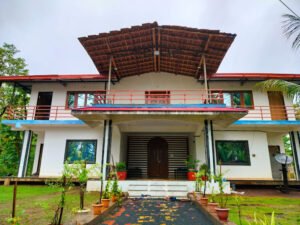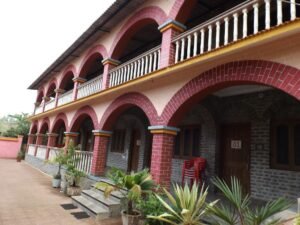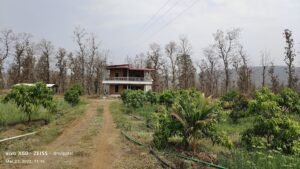In a rapidly urbanizing world where fast fashion, machine-made goods, and digital experiences dominate everyday life, India’s rural heartlands remain rooted in centuries-old customs, arts, and crafts. These timeless traditions, passed down through generations, are now endangered. However, an unexpected force is nurturing them back to life—rural homestays. These modest, family-run accommodations are not only offering travelers a place to stay, but are also becoming vibrant centers for cultural revival and sustainable livelihoods.
Table of Contents
The Indian Craft Crisis 🎨🧵
Artisanal practices such as bamboo weaving 🧺, Warli painting 🖌️, terracotta sculpture 🏺, block printing 🖨️, handloom weaving 🧶, and natural dyeing 🌿 are integral to India’s diverse cultural identity. However, many of these art forms have struggled to stay afloat amid the rise of mechanization, limited commercial exposure, and economic pressures. Younger generations often migrate to cities, leaving behind a fading heritage.
But change is quietly brewing in the countryside. Homestays are emerging as a solution—not just to rural tourism needs, but to cultural and economic revival.
Homestays as Cultural Bridges 🏡🌾
Platforms like VanGhar.in are connecting curious travelers with the soul of India’s remote regions. These aren’t just stays in scenic, tranquil villages 🏞️ or amidst lush greenery 🌳—they’re immersive experiences that allow guests to live the stories of the people who reside there.
Tourists lodging in tribal homestays in Dang, bamboo huts in Chopna, or farm cottages near Saputara are often introduced to a vibrant way of life. Guests participate in cooking traditional meals 🍲, joining harvest rituals 🌾, and more importantly, learning the native crafts that were once on the verge of extinction. Painting a tribal motif on a courtyard wall 🎨, spinning thread on a handloom 🧵, or shaping clay into pots 🏺—these interactions form deep human connections.
A Two-Way Benefit 🔄
- ✅ For Travelers: Guests enjoy a genuine, offbeat experience far removed from the mainstream tourist trail. Instead of mere sightseeing 👀, they engage in skill-based, hands-on learning that offers cultural enrichment 🌍 and personal fulfillment 🙌.
- 🤝 For Hosts/Artisans: Local crafts find a renewed market and sense of purpose. Artisans receive feedback 💬, admiration 🌟, and direct income 💰. Many homestays now offer curated workshops 🧑🏫 and have created small-scale enterprises selling crafts to visitors and online 🛍️.
Real-Life Examples 📌
- 📍 In Gujarat’s Saputara hills, multiple homestays incorporate Warli painting lessons into the stay, taught by community elders.
- 📍 In Chopna, Madhya Pradesh, a once-dormant bamboo artisan resumed his traditional work after homestay tourism revived demand for handcrafted products.
- 📍 Tribal women near Shabari Dham are rediscovering ancient dyeing methods, turning their homes into vibrant showcases for handmade textiles.
- 📍 In Ahwa and surrounding regions, homestays collaborate with local potters and basket weavers to give live demonstrations to guests.
How Platforms Like VanGhar Help 💻🤝
- 📖 Storytelling: Every homestay profile narrates the heritage of the host family, highlighting their artistic roots.
- 🌐 Market Reach: VanGhar’s digital platform gives these micro-entrepreneurs visibility well beyond their remote location.
- 🌱 Sustainable Tourism: By focusing on culture-driven travel, VanGhar encourages preservation of both nature and tradition, rather than mass commercial tourism.
- 💪 Empowerment: Especially for women, these platforms create space to share knowledge, generate income, and build community pride.
The Bigger Picture for Homestays in India 🖼️
Where mass tourism often dilutes local cultures and overburdens fragile environments, homestay-based, slow tourism flips the narrative. It becomes a tool for preservation, not exploitation. These village-based accommodations evolve into living museums—not ones behind glass walls, but those alive with human stories, hands-on skills, and everyday beauty.
When travelers choose a rural homestay, they are not merely booking a room 🛏️. They are participating in the protection of heritage 🛕, contributing to the local economy 💵, and ensuring that the legacy of Indian craftsmanship continues to thrive—vibrant, valuable, and visible.




